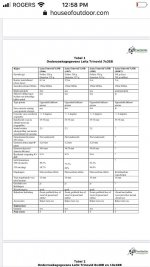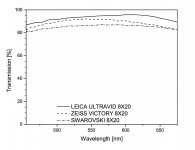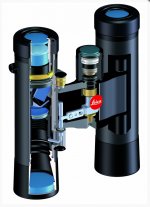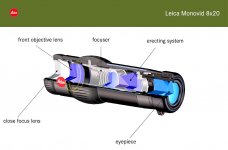Highest Leica Transmission?
The highest transmission Gijs has recorded for Leica roof prisms is from the 8x20 Ultravid
The details are from a 2005 (!) test ‘Compact kijkers’ at:
https://www.houseofoutdoor.com/verrekijkers/verrekijkers-testen-en-vergelijken
The test states 94% at 555 nm, and from the attached graph it would be around 92% at 500 nm
From previous Leica catalogues, we know that both the 8x20 and 10x25 UV’s have a relatively simple construction of 6 lenses per side
Based on published images, the detail is:
- Objective of 3 elements in 2 groups: 2 + 1 focusing
- Eyepiece of 3 elements in 2 groups: 2 + 1
and so only 8 air-to-glass lens surfaces!
See both a cutaway image of a 10x25 UV, along with a cross-section one of an 8x20 Monovid (which makes the eyepiece construction much clearer)
I’ve long thought the 8x20 UV's performance provides a significant insight into Leica’s use of multi-coatings
It’s not that Leica can’t make binoculars with as high transmission as Swarovski or Zeiss - but in balancing the factors that make up an image - they usually take a somewhat different approach
e.g. see my previous comments in the last part of this post:
https://www.birdforum.net/showthread.php?t=370530
John









